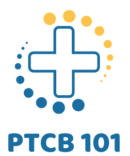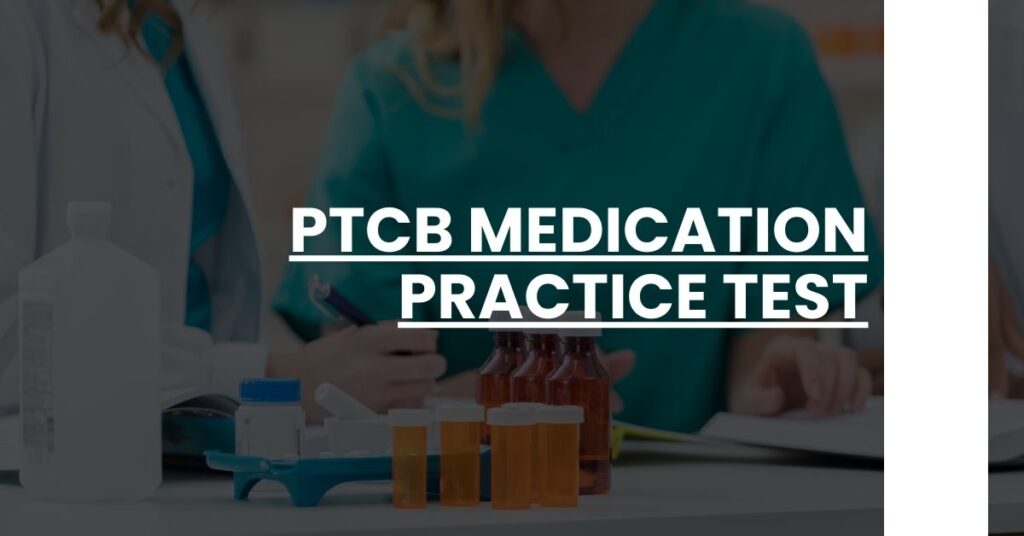Ace your PTCB medication practice test with confidence using our expert guide.
- Tailored Study Material: Focused content to boost your medication knowledge for the PTCB exam.
- Strategic Preparation: Master critical concepts with practice tests and analysis.
- Efficient Learning: Utilize tips for remembering common medications and managing your exam time effectively.
Begin your journey to PTCB success with our targeted practice resources.
- Understanding PTCB and Its Significance
- The Role of Medications in the PTCB Exam
- How to Use PTCB Medication Practice Tests Effectively
- Resources for PTCB Medication Practice Tests
- Study Tips and Best Practices for Mastering Medication Questions
- Common Medications to Focus On for the PTCB Exam
- Analyzing Practice Test Results to Identify Weak Areas
- Time Management During the Medication Section of the Exam
- Conclusion: Next Steps After Taking Medication Practice Tests
Understanding PTCB and Its Significance
The Pharmacy Technician Certification Board (PTCB) is a pivotal certifying body in the world of pharmacy, setting the gold standard for the assessment and recognition of pharmacy technicians. Its chief function is to administer the Pharmacy Technician Certification Exam (PTCE), which evaluates a candidate’s mastery of the necessary skills and knowledge in pharmacy practice.
Why PTCB Certification Matters
Certification from the PTCB is not just about holding a credential—it’s a marker of professional achievement that can significantly impact a technician’s career trajectory. It’s recognized across the United States, signaling to employers that a pharmacy technician is committed to excellence in their role and has met rigorous national standards. Certification can lead to higher earning potential, greater job mobility, and a deepened trust from pharmacists and patients alike.
When one talks about the essence of PTCB certification, it isn’t merely about fulfilling a job requirement—it showcases a technician’s dedication to patient care and medication safety, which is at the heart of healthcare provision.
The Role of Medications in the PTCB Exam
A pharmacy technician’s primary role is assisting pharmacists in ensuring the safe and effective use of medications. Predictably, the PTCB exam places a strong emphasis on a candidate’s proficiency with medications, weighing heavily in their overall evaluation.
Key Domains of the Medication Section
The medication section of the PTCE is crafted to examine a technician’s understanding of pharmacology, medication safety, and therapeutic outcomes. Mastery over these domains is vital as they underpin the very nature of a pharmacy technician’s daily tasks—correctly dispensing prescriptions, advising on drug interactions, and aiding in medication therapy management.
How to Use PTCB Medication Practice Tests Effectively
Practice tests are an invaluable tool in preparing for the medication sections of the PTCE. Here’s how to leverage them effectively:
Strategize Your Study
- Take initial practice tests to assess your starting point.
- Review results in detail, marking areas where you excel and where improvement is needed.
- Create a study plan focusing on weaker areas, while continuing to hone your strengths.
- Regularly take additional practice tests to track your progress.
- Reflect on your answers, especially the incorrect ones, to understand your mistakes.
This iterative process helps consolidate knowledge and instill confidence.
Resources for PTCB Medication Practice Tests
In search of quality PTCB medication practice tests? Look no further—numerous resources, both free and paid, are available to kickstart your prep.
Where to Find Practice Tests
- The PTCB offers official practice exams, which mirror the real PTCE in format and content. These practice tools are designed to provide candidates with a realistic test-taking experience.
- Websites like PTCB Practice Test present a suite of specific quizzes, including targeted tests on pharmacology, drug classifications, and more. They allow for focused practice on particular subject areas.
By utilizing these practice tests, aspiring pharmacy technicians can gain firsthand experience of the PTCE’s structure and rigor, letting them identify knowledge gaps and solidify their understanding of medications. Moreover, evaluating one’s performance can pinpoint areas that need additional study, ultimately guiding the study strategy towards success.
Transitioning smoothly to the next section, it’s crucial to not only practice regularly but to also develop a keen understanding of how to attend to feedback and benchmark performance effectively. That’s how one turns a good study habit into a result-oriented strategy.
Study Tips and Best Practices for Mastering Medication Questions
Preparing for the medication questions on the PTCB exam can be daunting, but with the right approach and study routine, you can tackle this section with confidence. Here’s how to optimize your study sessions:
- Create a Study Schedule: Allocate dedicated time slots each week to focus on different medication categories. Stick to your schedule rigorously.
- Understand Drug Classifications: Familiarize yourself with the various drug classes and understand their effects, uses, and side effects.
- Develop Memorization Techniques: Utilize mnemonic devices or flashcards to memorize common medications and their purposes.
- Practice Calculations: Be proficient in dosage calculations, IV flow rates, and other pharmaceutical math to ensure accuracy in dispensing medication.
- Stay Updated: Medications continually evolve, so keep abreast of the latest FDA approvals and discontinued drugs.
By following these best practices and integrating them into your study plan, you’ll be well on your way to mastering the medication questions that are integral to the PTCB exam and your future role as a pharmacy technician.
Common Medications to Focus On for the PTCB Exam
Knowing which medications to pay special attention to can streamline your study process. While the PTCB exam doesn’t adhere strictly to a predefined list, some drugs come up more often than others. For example, antihypertensives, antidiabetics, and antibiotics are commonly prescribed and therefore, are important to know.
Use these methods to commit key medications to memory:
- Group Medications by Class: Study drugs with similar therapeutic effects together.
- Teach Back: Explain drug mechanisms and uses to someone else, even if it’s just to your reflection, to reinforce understanding.
- Interactive Quizzes: Engage with online quizzes and flashcards that can help cement your recall. Sources like RxTechExam provide listings of common drugs that are worth reviewing.
As you delve into these resources, incorporating them into your ptcb medication practice test will solidify your command over the essential pharmaceutical knowledge needed for exam success.
Analyzing Practice Test Results to Identify Weak Areas
Merely taking practice tests isn’t enough; analyzing your results to uncover weaknesses will direct your preparation toward the most critical areas. After completing each ptcb medication practice test, take the following steps:
- Review Each Question: Go through both correct and incorrect responses to ensure your understanding is solid.
- Identify Patterns: Are there specific classes of medication or types of questions you struggle with?
- Seek Clarification: If any answers confuse you, refer to authoritative sources or consult with a knowledgeable peer or mentor.
Repeatedly working through this analysis loop after each practice test can dramatically enhance your readiness for the PTCB exam. Remember, the goal isn’t just to pass a test but to become a proficient pharmacy technician equipped to handle medication-related challenges.
Time Management During the Medication Section of the Exam
Time management can mean the difference between a rushed exam and a well-executed one. Here’s how to control the clock during the PTCB:
- Prioritize Easy Questions: Quickly move through questions you’re confident about, saving time for tougher ones.
- Use the ‘Mark for Review’ Feature: If available, mark uncertain questions and revisit them after addressing all others.
- Pace Yourself: Keep an eye on the time and adjust your pace to ensure you don’t leave any section incomplete.
Implement these strategies during your ptcb medication practice test sessions to develop a sense of timing that will pay off on exam day.
Conclusion: Next Steps After Taking Medication Practice Tests
Having completed your practice tests, what’s next? Utilize the results to refine your study plan. Prioritize areas where you underperformed and schedule additional time to focus on these topics. Review your correct answers as well to reinforce that knowledge.
Consider forming a study group or finding a study partner to break down complex concepts together. Collaborative learning can provide new perspectives and shared motivation.
Finally, remember to stay aware of the PTCB’s recommended study materials and continuing education updates, ensuring your preparation aligns with the exam’s current scope and standards.
With this comprehensive guide to mastering the PTCB medication practice test, you’re now poised to push towards exam readiness, advancing your journey into a successful and fulfilling career as a pharmacy technician.

